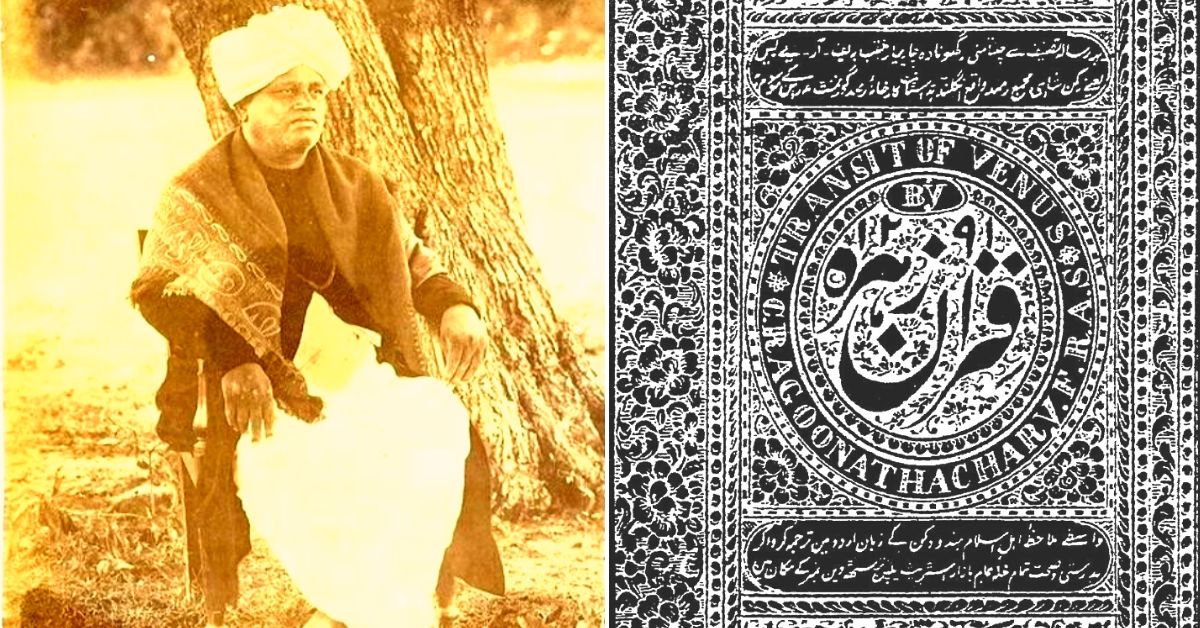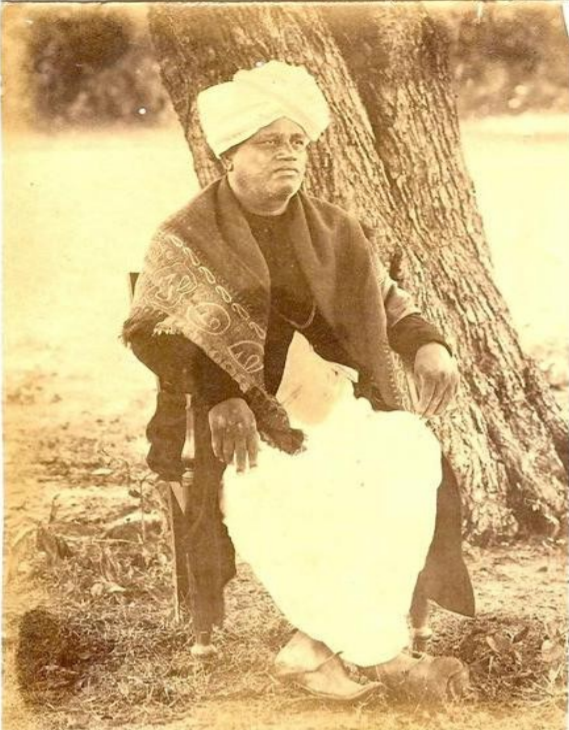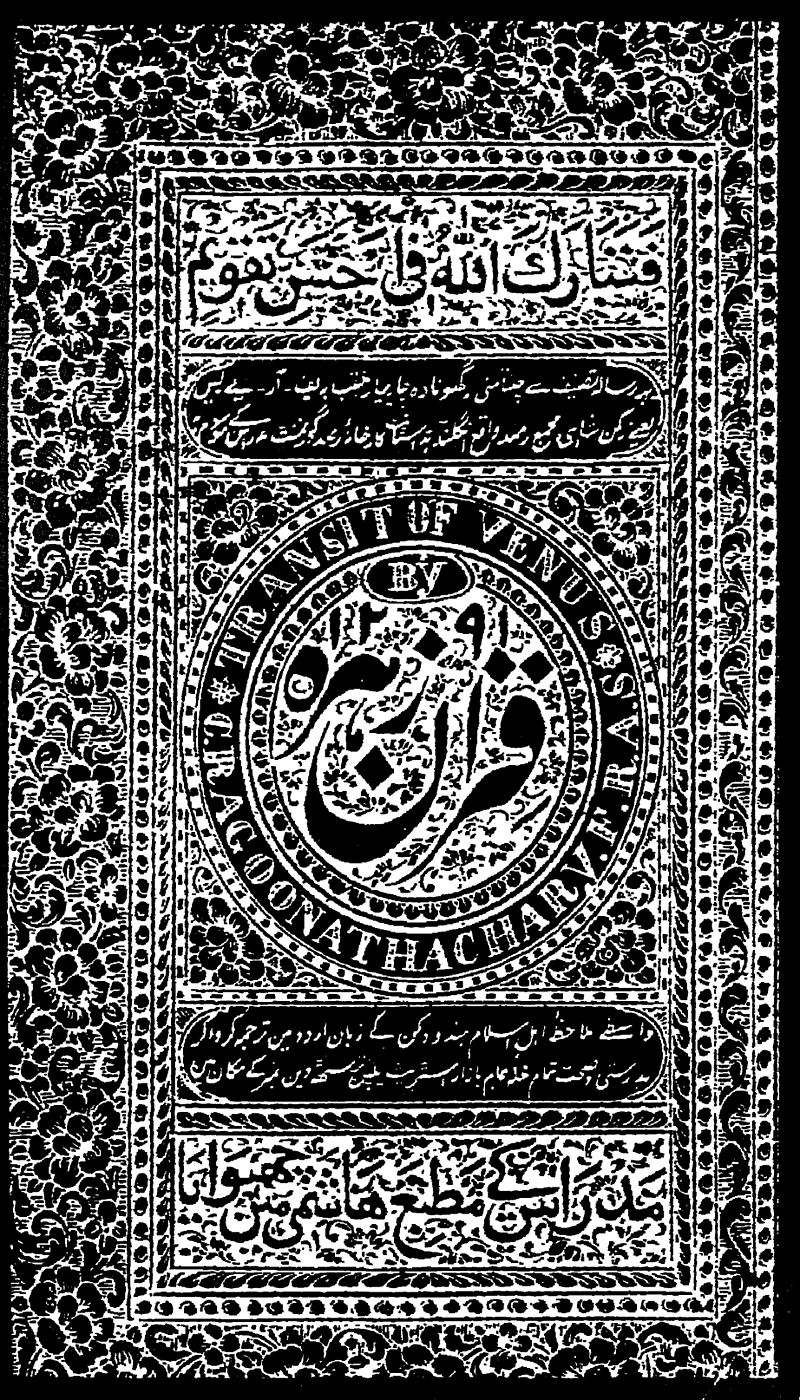The Unsung ‘Coolie’ Who Made the First Astronomical Discovery by an Indian
The first Indian to become a Fellow of the Royal Astronomical Society in 1872, Chinthamani Ragoonatha Chary never received any formal training in astronomy — his expertise was self-taught! #ForgottenHeroes #IndiansInScience

Chinthamani Ragoonatha Chary, the 19th-century astronomer, holds a special place in the history of modern astronomy in India.
He was the first India-born astronomer to publish a research paper (in the ‘Monthly Notices of the Royal Astronomical Society’ publication) and elected fellow of the Royal Astronomical Society on 12 January 1872. His brilliance played an essential role in breaking the glass ceiling set against native Indians by an academic system steeped in the hierarchies of colonialism.
As the first assistant of the Madras Observatory from 1864 and 1880, he championed the establishment of an independent modern Indian observatory for training and education, inculcated modern modes of observations to further improve traditional methods of astronomical calculations and discovered two variable stars including the R Reticuli.
Early Life
There is very little known about his life outside of astronomy with researchers disputing even something as mundane as his year of birth. Some have pegged it at 1822, while the obituary notices of Royal Astronomical Society Fellows claim the year 1828.
According to this 2009 paper published by four authors from the Indian Institute of Astrophysics in Bengaluru, “Ragoonatha Chary (some have also spelt the name as Raghunatha Chari) must have had a good Sanskrit education in his early childhood based on his proficiency at interpreting and analyzing the Sidhanthic astronomy texts. He apparently hailed from a family of panchang (almanac) makers.”
Joining the Madras Observatory as a young ‘cooli[e]’ at the age of 18, he rose to the position of first (and head) assistant to the Government Astronomer through sheer hard work and dedication.
A self-taught individual, he acquired the requisite mathematical knowledge to “predict occultation [when one object passes in front of another from an observer’s perspective like a solar eclipse] of stars in the Sun’s path during the total solar eclipse of 1868 and much more.”
Based on the writings of NR Pogson, who was then the Government Astronomer at Madras Observatory, “he possessed sufficient skill and energy to make additional observations, worthy of the reputation of the Observatory and beneficial to science.”
Groundbreaking work
Living in what was then Nungumbakam village (a posh locality in Chennai today), which was close to the observatory, Chary was appointed as an astronomer in 1864 and established a productive working relationship with Pogson.
At the observatory, his primary responsibility was to observe stars and determine their positions for the Madras Catalogue.
Three years later in 1867, Chary discovered the variable star R Reticuli.
“In 1867, the discovery of the variable star R Reticuli by Poogson’s assistant C Ragoonathachary is memorable as the first astronomical discovery by an Indian,” according to this 1991 paper published in the Journal of the Royal Astronomical Society of Canada.
Some have also attributed the discovery of another variable star ‘V Cephei’ or ‘U Cephei’ to the Indian astronomer, but the Madras Observatory did not confirm it.
While his observations for the total solar eclipse in 1868 were marred by cloudy weather, his description of the 12 December 1871 eclipse was translated into four native languages.
According to the letter Pogson wrote to the Chief Secretary of the then Madras Government, Chary’s findings were “well calculated to instruct and at the same time to dispel the superstitious fears of the ignorant native masses, while it goes further and by its quotations from the puranahs, and other weighty arguments show that the absurd notions which render eclipses so alarming are not authorized by their own religious writings.”
However, a significant contribution was publishing his observation of major celestial events like total solar eclipses or transit of planets over the Sun in pamphlets not merely written in English, but vernacular languages as well.
In these pamphlets, he would explain not just the said phenomena but also how to improve native astronomical methods and calculations with better data. For example, in his pamphlet on the Transit of Venus in 1874, he says,
“It is written principally for information of such of my countrymen as have not had the advantage of any regular course of scientific reading. … Although the class of phenomena to which the Transit of Venus belongs is mentioned in Hindu treatise on Astronomy, especially of the Sidhanta Siromani, yet the Sidhantis or Hindu astronomers are really not familiar with the nature of this particular occurrence and cannot predict it with even a rough approach to accuracy, happening as it does at such strange and rare intervals.”

While he wrote the English version in the form of a dialogue (samvadam) which he learned from discussing astronomical facts with ‘Hindu professors’, he interpreted his work in other languages like Sanskrit, Tamil, Telugu, Urdu, Malayalam, and Marathi using different styles.
Meanwhile, he was also a champion of establishing a native Indian space observatory.
In a speech he delivered at Pacheappah’s Hall, Madras, on 13 April 1874, he says, “Such places [observatories] exist in hundreds in Europe, but nowhere is the need for them greater than in India. Not much money, a little zeal, a little steadfastness of purpose, wed these to a regard for science, and soon would the metropolis of southern India be graced with an Institution which would be an honour to the country.”
Nearly six years after delivering that speech, he passed away on 5 February 1880, following a bout of ill health. The legacy he leaves behind is of a man who sought to build upon a traditional system of knowledge using modern and contemporary methods.
In an obituary to Chary, The Madras Mail wrote,
“His… ready skill as an observer, combined with accuracy and speed in computation, and a fair and useful amount of self-acquired mathematical knowledge, rendered him until disabled by impaired health, invaluable in the Observatory, and the chief share in the catalogue of stars in hand, with the Transit Circle, since 1862, comprising already of over 38,000 separate observations, is due to his personal exertions.”
Also Read: One of Our Best Biochemists With 16 JACS Papers, She Was Never Awarded By India!
(Edited by Gayatri Mishra)
Like this story? Or have something to share? Write to us: [email protected], or connect with us on Facebook and Twitter.
This story made me
- 97
- 121
- 89
- 167
Tell Us More
We bring stories straight from the heart of India, to inspire millions and create a wave of impact. Our positive movement is growing bigger everyday, and we would love for you to join it.
Please contribute whatever you can, every little penny helps our team in bringing you more stories that support dreams and spread hope.



















